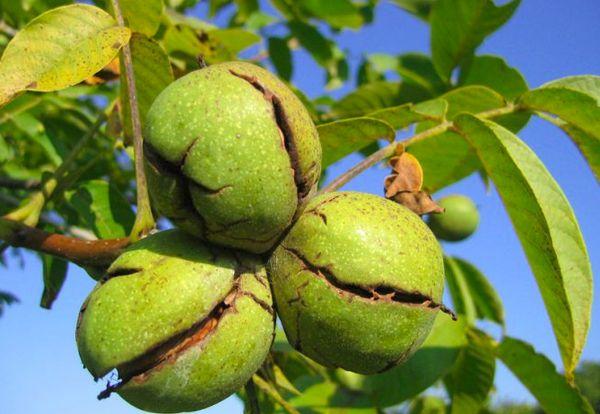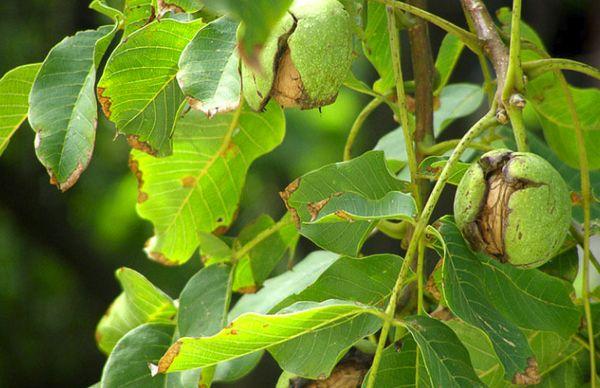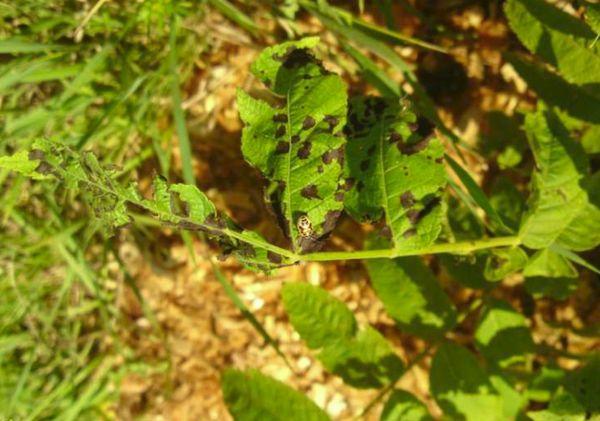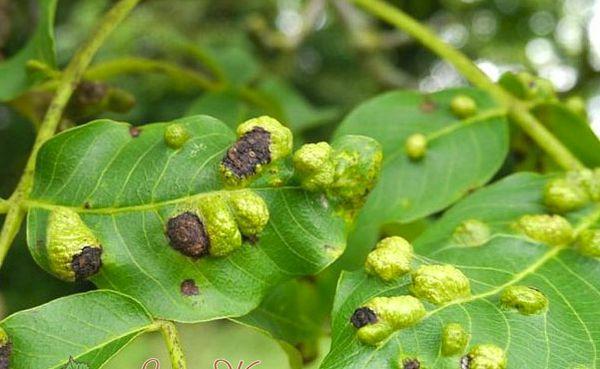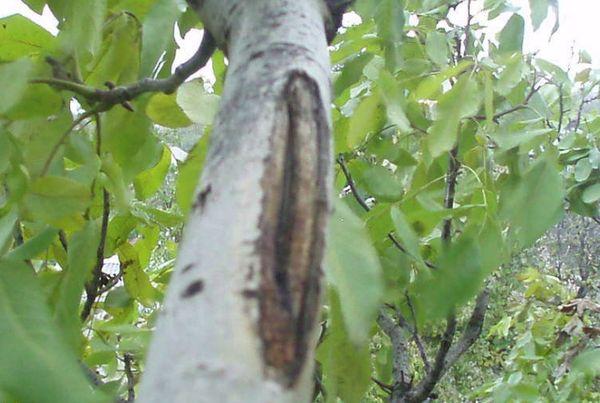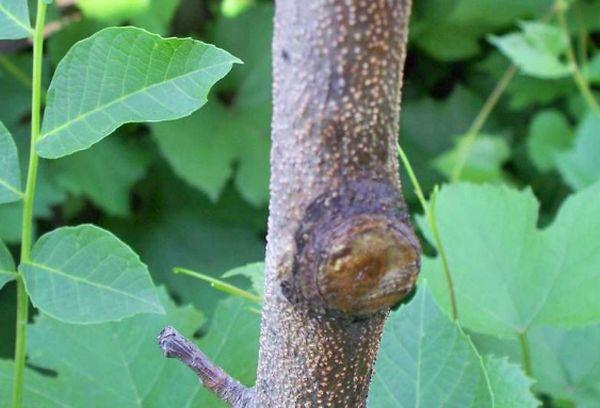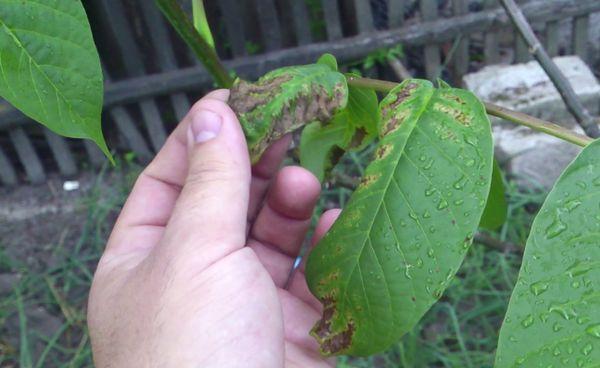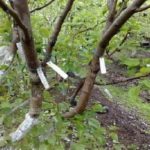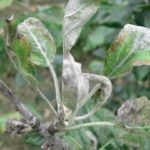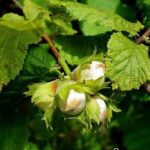One of the popular crops that produces valuable nuts is difficult to grow. In addition to favorable conditions, walnuts need careful care in compliance with the rules of agricultural technology. If you deviate from the rules, you will have to deal with walnut diseases and pest infestation. In this case, you can lose the harvest, as well as the unique tree.
Causes of diseases and pests
Many factors cause diseases of nut crops. You can determine what is happening to the tree by the condition of the bark, leaves, and fruits. When the leaves of a walnut turn black, it means that a serious infection has struck the plant. It must be dealt with immediately. Pathogenic microorganisms remain active for a long time, waiting for suitable conditions for reproduction.
They attack those plants that are planted in an area where:
- little light;
- the soil is swampy due to the close occurrence of groundwater;
- soil acidity is high;
- soils are poor in nutrients.
The nut that is weakened by winter cold and spring frosts is attacked by fungi, bacteria, as well as insect parasites. Such walnut specimens do not bear fruit and are constantly sick.
What can a walnut pick up?
Infectious diseases lie in wait for plants at every turn. If there are trees in the garden with tissues damaged by pathogenic bacteria and fungi, then the neighbors will become infected from them. The type of disease can be determined by certain signs. Then a systematic fight should take into account the specifics of the infection and the characteristics of its course.
Bacteriosis
In the spring, when it is warm and damp, you need to carefully inspect walnut trees. Awakened insects can transfer pollen with pathogenic bacteria from one plant to another. Bacteriosis manifests itself as dark spots on leaves, fruits, shoots, and flowers. The period of walnut pollination is especially dangerous due to the increased likelihood of infection through pollen.
The result of the action of bacteria will be loss of yield, as flowers and ovaries will die. But the young fetus is also exposed to pathogens. Then it shrinks and falls off.And all parts of the plant become brown.
Bacterial burn
The rapid development of an infectious disease leads to the death of the tree. Looking at a sick plant is scary. It seems that the crown, the trunk - everything is burned. Black color becomes dominant on the leaves. Young shoots stop developing and dry out. The buds are dying. The inside of the fruit turns black. Cankers on the entire aerial part of the nut spread faster during rainy periods. It is very difficult to save a plant if the disease has become advanced.
Brown spot (marsoniosis)
Marsonia fungus causes spotting on the leaves and fruits of the crop. First, in May, yellowness begins to appear on young leaves. Small spots grow and turn brown. When they merge, the leaf falls off. The ovaries are also covered with reddish-brown dots. Nuts cannot be consumed internally, as the kernel deteriorates and dries out. Half of the garden crop suffers from the consequences of infection.
Root cancer
The rod-shaped bacteria manage to survive the winter in the soil to begin reproducing in the spring. The plant becomes infected through the penetration of bacteria into the roots of the walnut. And the gates of infection are cracks and wounds on the surface of the root system. Under the influence of bacteria, growths and swellings form on the tissues of the underground part of the nut.
The pathology can be noticed by the delay in the growth of the walnut. Cancer is diagnosed by digging up a tree and examining its roots. Only timely treatment measures will save the tree from death.
Insect pests of nuts
Weakened walnuts often become the target of garden pests. Insects try to lay eggs on leaves, bark, and fruit.It is difficult to notice some of the parasites, so you need to know how the results of their vital activity affect the crop.
American white butterfly
A dangerous pest of hazel plantations is an ordinary butterfly with white wings, sometimes decorated with dark dots. By laying eggs on leaves and shoots, the female causes great damage to the tree. The gluttony of the newly born caterpillars is great. They can destroy all foliage and young growth. Having moved on to their neighbors, the parasite larvae continue their activities. Over the summer, the female makes 3 clutches of eggs, so the number of caterpillars only increases.
Sapwood
Weakened specimens of the nut crop are attacked by a black bug, the size of which varies between 3-4 millimeters. It has a black head and brown wing covers. Beetles fly intensively in June. It is difficult to see beetle larvae, as they are hidden under the bark.
If the wood is damaged, the sapwood larvae make their way inside. There they, gnawing out passages 6 centimeters long, move towards the kidneys. They feed on them. Hence the decrease in nut yield and the leakage of gum. For young plants, sapwood is dangerous because it damages their trunks.
Walnut warty mite
Fungal plant diseases cause the appearance of gall mites. Pest attacks increase during wet summer periods. An insect can be detected by the following:
- swelling appears on the leaf;
- young shoots stop developing;
- branches and leaves begin to dry;
- a thin web is visible on the underside of the leaf plate.
As the mite multiplies, it destroys walnut plantings. There are fewer fruits and the trees are weakening.
Nut moth
A small butterfly with grayish-brown wings poses a danger to walnut seedlings.The larvae, emerging from moth eggs, eat the tender stems of the plant. If caterpillars parasitize mature trees, they destroy green leaves, feeding on the succulent center. Therefore, the leaf turns yellow, dries up and falls off.
codling moth
A small moth damages the garden in its caterpillar stage. At first the larva is dark gray in color, then pinkish-white. The caterpillar feeds on young nut fruits. Having bitten the skin, it climbs inside, eating away the pulp. A dot on the surface of the nut indicates infection with the codling moth. For the winter, caterpillars in dense white cocoons hide under lumps of soil, in cracks in the bark. In spring they turn into pupae. In June, the butterfly emerges from its pupa.
Methods of controlling diseases and pests
In the spring, spores of pathogenic fungi begin to multiply, so walnuts should be treated before the leaves bloom. The main remedy will be Bordeaux mixture or preparations with a high copper content.
A second treatment should be carried out if the spots on the leaves have increased in size. Spray the crown twice more every 2 weeks.
It is useful to treat trees before the inflorescences appear. After harvesting, you can spray with preparations such as “Zineb” or “Hom”.
Disease control techniques include:
- pruning damaged shoots and leaves;
- destruction of fruits if they have become brown and shriveled;
- carrying out measures until the plant is completely cured;
- burning of all plant residues in autumn;
- Digging soil in the garden in spring and autumn.
To protect against pests, both insecticidal preparations and traps are used. The number of moths in the garden is determined by how many individuals are caught in traps. Pheromone and food traps are used.
Sweet juice of fruits and berries, slightly fermented, is suitable as bait. Place the trap on the tops of trees. If there are a lot of butterflies, then it is necessary to treat the trees with pesticides. Poisons are used before the caterpillars appear. Then it will be more difficult to cope with the pest and its offspring.
Before winter, carefully inspect the bark of the trees, covering up damage and cracks with garden varnish. It is necessary to destroy the pupae and caterpillars hiding under the bark. They clean the bark of walnut trees where sapwood beetles have made their tunnels. It is imperative to remove mosses and lichens from walnut trunks.
Protection against pests consists not only of chemicals, but also of biological agents. Avermectin-based insecticides are safer. It is allowed to use products from the group of thiacloprids and chlorantraniliproles.
If you soak the branches well with insecticidal preparations during treatment, the number of pests will decrease.
Preventive actions
Diseases and pests on walnuts can be prevented by a set of agrotechnical and biological measures:
- Annual thinning of the crown and removal of diseased and damaged branches will increase the illumination of the tree.
- Several times during the growing season, they loosen the soil between the rows, removing weeds.
- Inspecting the walnut for nests of caterpillars and beetles will stop their reproduction.
- Timely feeding will help grow healthy plants.
- As a preventive measure, spraying with Bordeaux mixture is used three times, starting in early spring.
- In order for a tree to bear fruit well, it must be treated in time for fungal and bacterial infections.
You should not wait until the walnut foliage begins to turn yellow; you need to water and fertilize the plant in a timely manner. Be sure to ensure that there is no damage to the bark or shoots of the nut crop.

